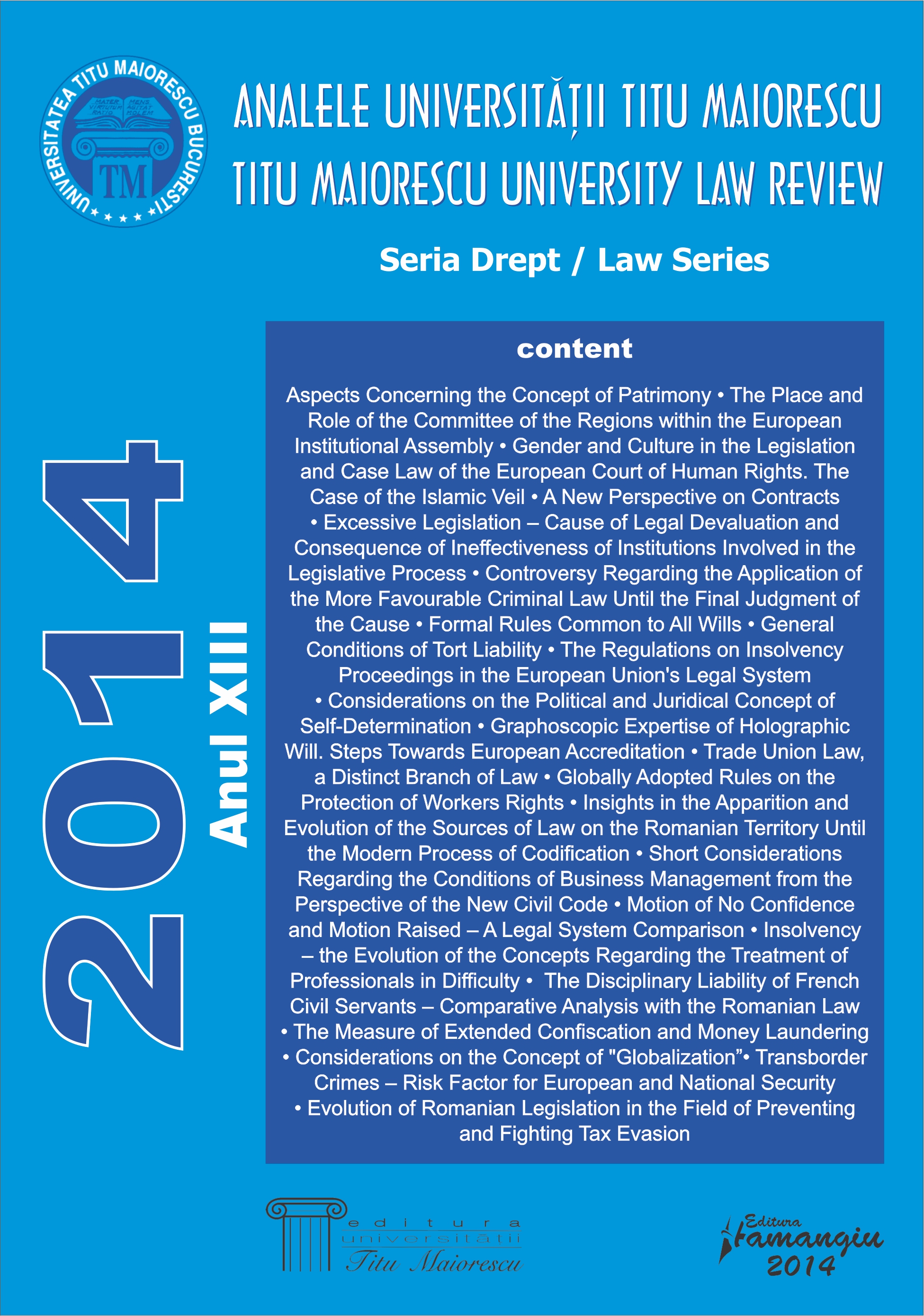INSIGHTS IN THE APPARITION AND EVOLUTION OF THE SOURCES OF LAW ON THE ROMANIAN TERRITORY UNTIL THE MODERN PROCESS OF CODIFICATION
INSIGHTS IN THE APPARITION AND EVOLUTION OF THE SOURCES OF LAW ON THE ROMANIAN TERRITORY UNTIL THE MODERN PROCESS OF CODIFICATION
Author(s): MIHAIL NIEMESCHSubject(s): Law, Constitution, Jurisprudence
Published by: Editura Hamangiu S.R.L.
Keywords: Dacia; juridical norms; custom; code of laws
Summary/Abstract: Geto-Dacians, the ancestors of the today Romanians, who were the northern branch of the Thracians, occupied starting with the Iron Age the Carpathian-Danubian-Pontic space. It is well known that the Geto-Dacian tribes populated a larger space than those of the current Romania. Once with the formation of the Geto-Dacian state, juridical norms emerged, some of them replacing the customs of the military democracy age. The unification of the Dacians in a big and strong state coincided with the elaboration of the Belagines dar laws which unfortunately were not preserved. In the Roman province Dacia the commerce flourished and evidence in this regard is offered by the “Transylvanian triptychs”. As regards the early Romanian states, the customs and the juridical norms, we specify the fact that the territories occupied by the Romanian population were organized institutionally and were governed by written and unwritten laws, all being animated by lawful and moral spirit. In the late Middle Ages, in the Phanariot time in Walachia and Moldavia continued the legislative work initiated by the autochthonous princes Matei Basarab in Walachia and Vasile Lupu in Moldavia. These two rulers, with many accomplishments for the benefit of the Romanian nation gave written laws of Byzantine inspiration.
Journal: Analele Universității Titu Maiorescu
- Issue Year: 2014
- Issue No: XIII
- Page Range: 175-185
- Page Count: 10
- Language: English

